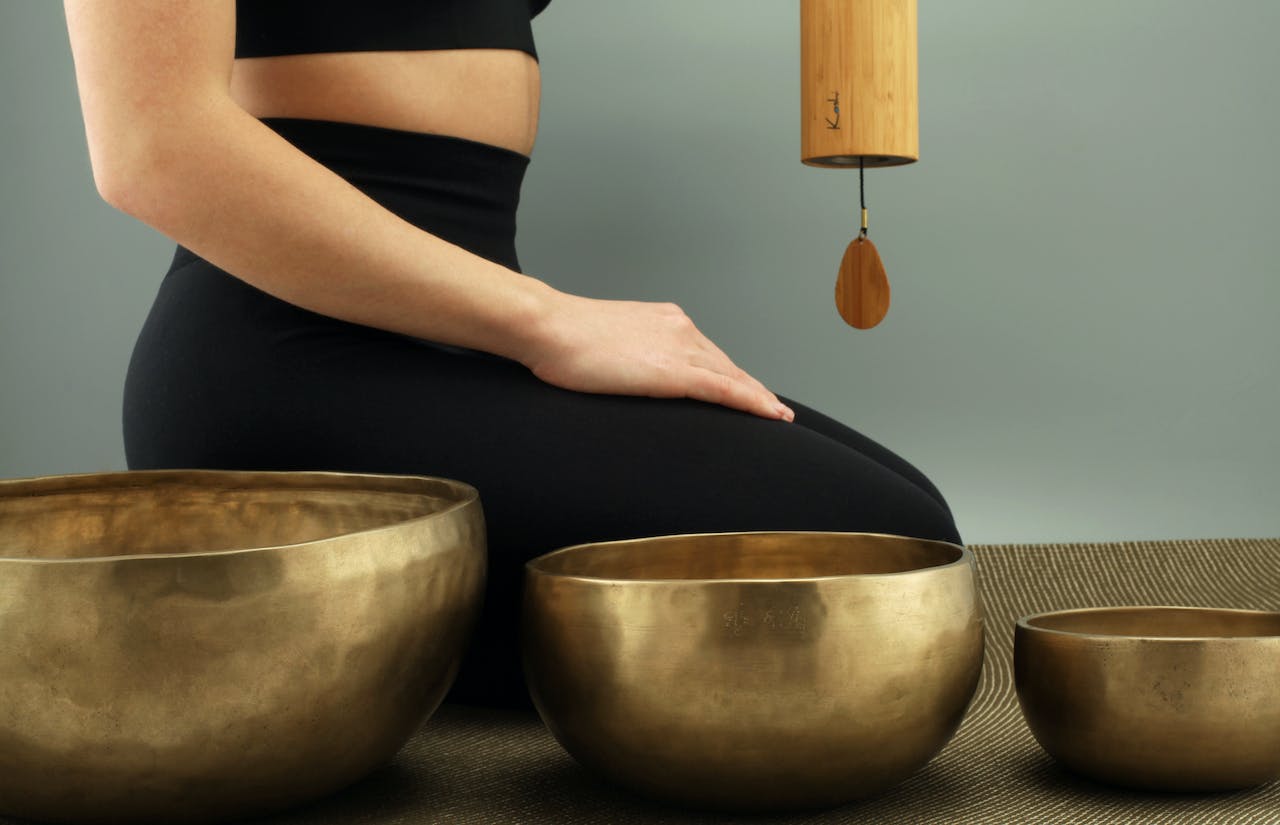
How To Enhance Your Yoga Classes With Sound Therapy
Do you spend hours curating the perfect playlist for your yoga classes? Do your students often praise you for your music choice? If so, why not consider elevating your classes further with the addition of sound therapy? While yogic and meditation music can set a relaxing and welcoming atmosphere, sound therapy goes one step further. Sound therapy offers music-loving yoga teachers a wonderful way to make their classes stand out while taking their students on a much deeper healing journey. So, what exactly is sound healing, and how can we incorporate its magic into our yoga classes?
What Is Sound Therapy?
Sound therapy, or sound healing, is a holistic healing practice that uses sound and vibration to enhance physical, emotional, and mental well-being. It is based on the idea that specific frequencies and tones can have therapeutic effects on our physical, emotional, and energetic bodies. Sound therapy instruments, such as bowls and gongs, produce high frequencies, promoting positive emotions like love, joy, and gratitude. Singing bowls, in particular, can be played at the different frequencies of the chakras, serving as a chakra-balancing technique.
Benefits Of Sound Healing
Sound therapy offers many of the same physical, emotional, and spiritual benefits as yoga. Therefore, introducing sound therapy to your yoga classes can enhance your students' experiences. The combination of yoga and sound healing is particularly effective at calming the mind and relaxing the body, which is becoming increasingly difficult in our modern world. As you know, many yogis struggle to switch off from the day's activities when they arrive on their mats. So, incorporating sound healing practices at the beginning of the class could increase relaxation, enhancing yoga's benefits. Let's explore some of the other benefits associated with sound therapy:
1. Improves Sleep Quality
Some sound healing techniques use specific frequencies associated with the delta and theta brain waves. As these brain waves promote relaxation and meditation, sound healing is excellent for calming the mind in preparation for sleep. Therefore, sound therapy makes a fantastic addition to your evening yoga classes!
2. Increases Energetic Vibration
The vibrations created from sound therapy may influence our subtle body, clearing negative energy from the chakras and meridians. As a result, you might experience increased positive thinking and physical energy afterward.
3. Improves Mental Health
Like yoga, sound therapy is proven to reduce stress and anxiety. It is thought that sound healing stimulates the vagus nerve (part of the parasympathetic nervous system) to clear stress from your body. It may also help to lower high blood pressure, which is related to chronic stress.
Types Of Sound Therapy You Can Use In Yoga Classes
You have likely come across gongs or singing bowls in yoga studios before. But sound therapy is a broad term encompassing various sacred instruments, classical music, and even some types of modern-day sound. By understanding the different types of sound healing techniques, you can better determine which ones best resonate with you and your students.
1. Tibetan Singing Bowls
Tibetan Singing Bowls are ancient instruments originating from the Himalayas. These handcrafted bowls are made from various metal alloys, such as copper and tin. To play them, you strike the bowel with a mallet. The bowls' vibrations resonate throughout the body, aiding in stress reduction and a sense of calmness. Because Tibetan Singing Bowls create frequencies that match the chakra system, this is a popular choice among spiritually-minded yoga teachers.

2. Crystal Singing Bowls
Crystal singing bowls are typically made from pure quartz crystal or, less frequently, amethyst, rose quartz, or citrine. Crystal singing bowls have benefits similar to Tibetan ones, facilitating healing and promoting mental clarity and emotional balance. Crystalline healing sounds also match chakra frequencies.
3. Gongs, Drums, & Other Instruments
Various other instruments are used in sound therapy, either alone or with singing bowls. One common one is the gong, a large metal disc that produces a resonant note when struck. Shamanic drumming is a type of sound healing that uses a drum to create vibrations that move through the body. Tuning forks are used in sound therapy to soothe the nervous system and balance the body's subtle energies.
4. Binaural Beats
Binaural beats are not a style of music but a perception of sound that our brain creates while listening to specific musical notes. Binaural beats are believed to influence brainwave patterns (known as brainwave entrainment) and induce specific mental states, like calmness. Binaural beats are used in yoga and meditation to help clear the mind and relax the nervous system. Emerging research has also found that binaural beats can reduce anxiety and improve our mood.
5. Classical Live Music
If you like playing classical music in your yoga classes, you'll surely love the idea of bringing live music into the studio. Playing acoustic guitar, piano, or harp in a yoga session, especially during savasana, has many physical and mental benefits. In fact, classical music has been proven to reduce stress, lower blood pressure, boost immunity, and even remove pain.
6. Mantra Chanting / Devotional Singing
You don't have to be able to play a musical instrument to bring the magic of sound into your classes. Devotional singing, known as Kirtan yoga, involves singing and chanting mantras of the Hindu gods and goddesses, often in conjunction with drums or other musical instruments. Kirtan is typically performed in a call-and-response style, making it an interactive therapy where everyone taps into their voice to access the power of sound. Similarly, mantra chanting calls for collective repetition of Sanskrit words and phrases. When chanted correctly, mantras produce specific tones that positively impact your energy and help you connect with divine consciousness.
Ways To Introduce Sound Therapy In Your Yoga Classes
As there are many types of sound therapy, there are various ways to introduce the power of sound into your yoga classes. Here are a few ideas.
1. Learn a Sanskrit mantra
One of the simplest ways to use sound therapy is by chanting Sanskrit mantras, even Om, which you may already chant in your classes. Other popular mantras include Om Namah Shivaya and Lokah Samastha. Whichever mantra you choose, ensure you learn the correct pronunciation, as this is what creates the specific vibration.
2. Learn to play singing bowls
If you're serious about combining yoga and sound therapy, why not consider training to become a sound healing facilitator? These courses, consisting of 20 to 100 hours of training, are becoming increasingly popular.
3. Partner with a musician
If you don't see yourself as musically talented, why not team up with someone who is? For example, a yoga teacher friend of mine recently created yin yoga and live piano sessions with a professional pianist. I've also attended yoga and live harp classes before, which were divine!
Final Thoughts On Yoga & Sound Therapy
So why should you add sound therapy to your yoga classes? Aside from the benefits mentioned above, sound therapy is part of the lesser-known yoga style, Nada Yoga (meaning union through sound). Therefore, incorporating sound healing creates a more well-rounded practice and a deeper spiritual experience for your yogis!






